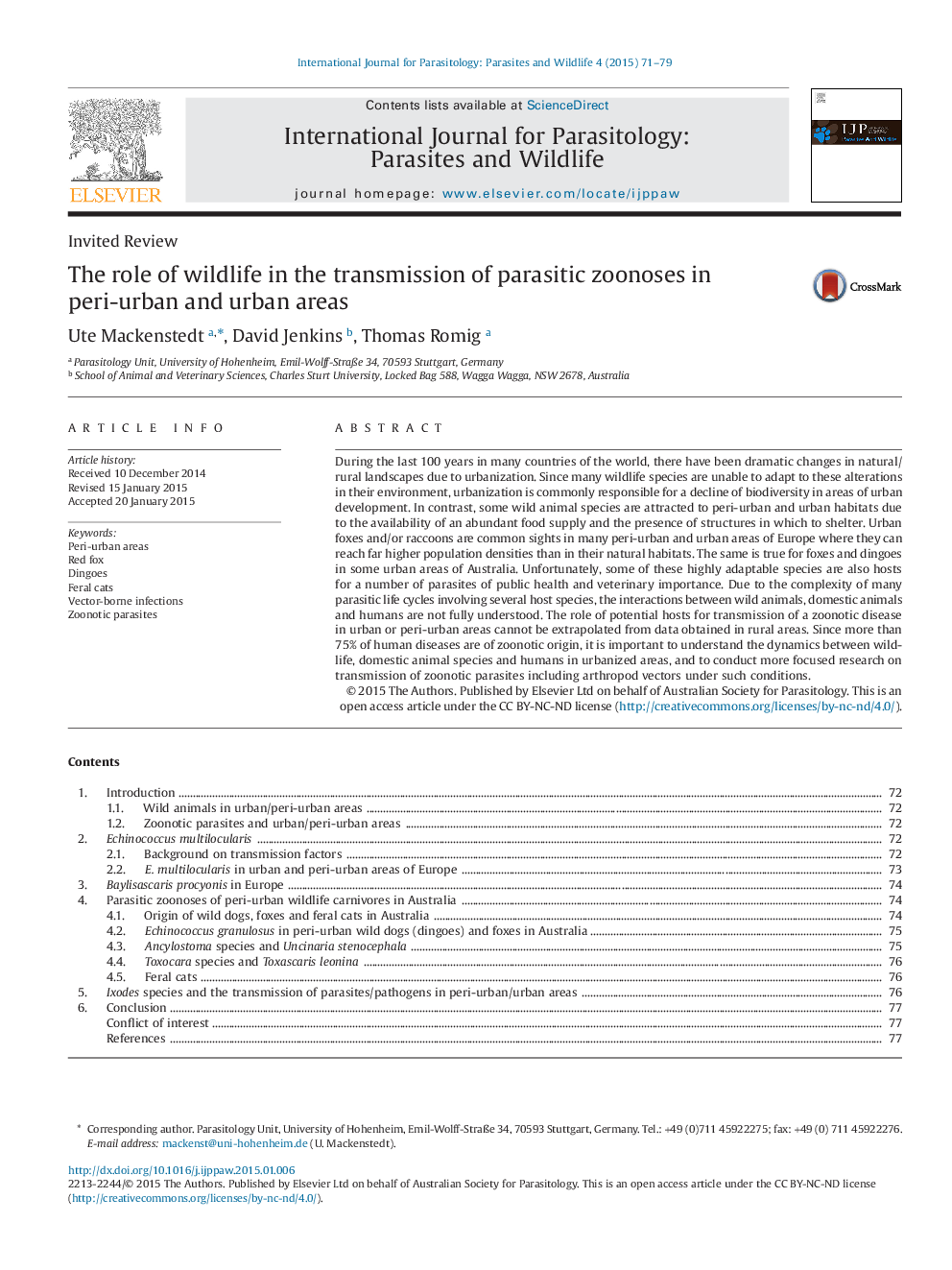| Article ID | Journal | Published Year | Pages | File Type |
|---|---|---|---|---|
| 2055170 | International Journal for Parasitology: Parasites and Wildlife | 2015 | 9 Pages |
•Urbanization has a huge impact on the transmission of zoonotic parasites.•Adaptable wild animals are attracted by peri-urban and urban areas.•Composition of wildlife communities differs between rural and urban areas.•The transmission of parasites from wild animals to humans and domestic animals in peri-urban and urban environments is far from being understood.
During the last 100 years in many countries of the world, there have been dramatic changes in natural/rural landscapes due to urbanization. Since many wildlife species are unable to adapt to these alterations in their environment, urbanization is commonly responsible for a decline of biodiversity in areas of urban development. In contrast, some wild animal species are attracted to peri-urban and urban habitats due to the availability of an abundant food supply and the presence of structures in which to shelter. Urban foxes and/or raccoons are common sights in many peri-urban and urban areas of Europe where they can reach far higher population densities than in their natural habitats. The same is true for foxes and dingoes in some urban areas of Australia. Unfortunately, some of these highly adaptable species are also hosts for a number of parasites of public health and veterinary importance. Due to the complexity of many parasitic life cycles involving several host species, the interactions between wild animals, domestic animals and humans are not fully understood. The role of potential hosts for transmission of a zoonotic disease in urban or peri-urban areas cannot be extrapolated from data obtained in rural areas. Since more than 75% of human diseases are of zoonotic origin, it is important to understand the dynamics between wildlife, domestic animal species and humans in urbanized areas, and to conduct more focused research on transmission of zoonotic parasites including arthropod vectors under such conditions.
Graphical AbstractFigure optionsDownload full-size imageDownload as PowerPoint slide
